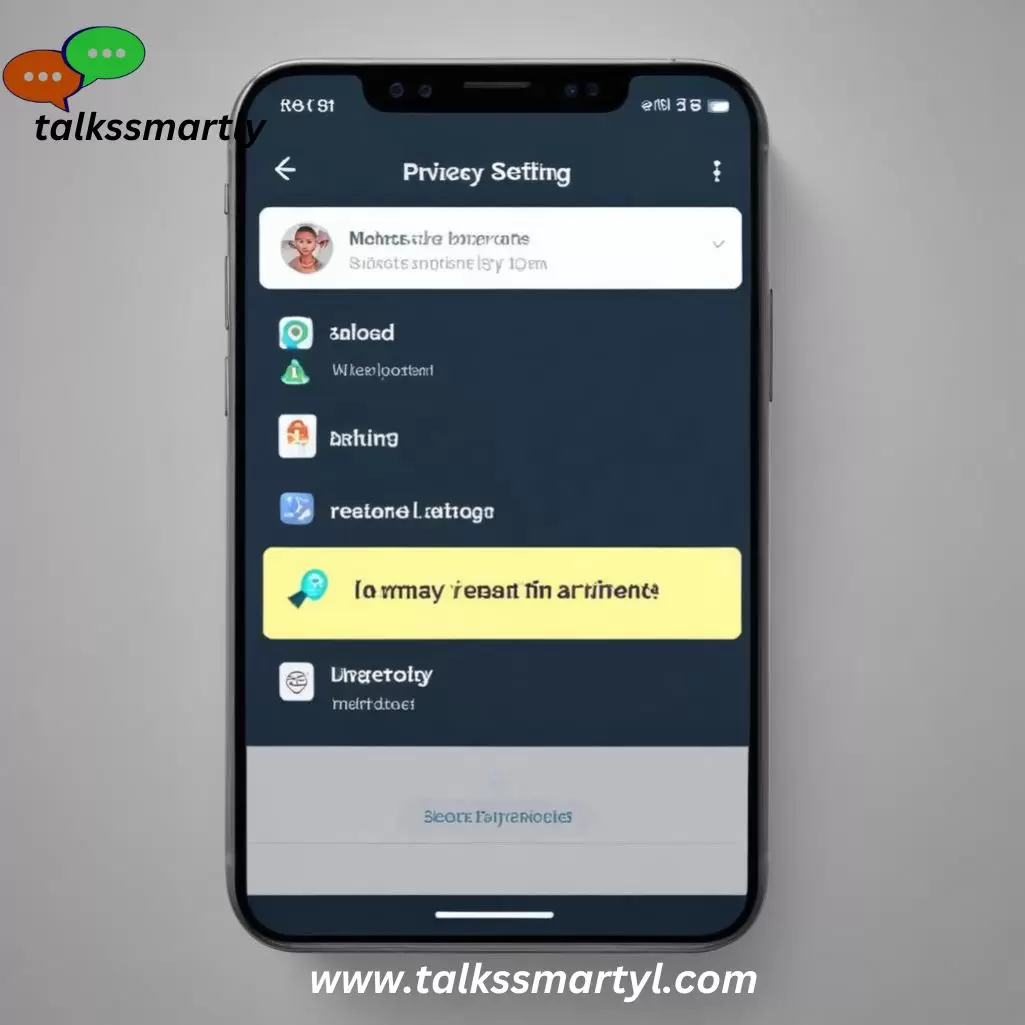Learn effective strategies to halt spam calls with practical examples that ensure peace of mind and uninterrupted daily routines.
Spam calls have become an everyday nuisance, affecting millions of people worldwide. These unsolicited calls are not just annoying; they can also pose significant security risks, including identity theft and financial fraud.
In this article, we will explore seven proven strategies to stop spam calls. We’ll delve into practical examples, ensuring that you have actionable steps to protect yourself and your loved ones.
Understanding the Nature of Spam Calls

Before we can effectively combat spam calls, it’s essential to understand what they are and how they work. Spam calls typically originate from telemarketers, scammers, or automated systems known as robocalls. These calls often use deceptive tactics to trick you into revealing personal information or purchasing unwanted products.
What Makes a Call Spam?
A call is generally considered spam if it meets one or more of the following criteria:
- Unsolicited: You did not request the call.
- Persistent: The caller repeatedly tries to contact you.
- Deceptive: The caller uses false information or tries to mislead you.
Understanding these characteristics can help you identify and avoid spam calls more effectively.
The Impact of Spam Calls
Spam calls can have a wide range of negative effects on your daily life. Here are some of the key impacts:
Financial Loss
Many spam calls aim to defraud you financially. Scammers may pretend to be from legitimate organizations, such as banks or government agencies, to trick you into giving out sensitive information or transferring money.
Emotional Distress

Receiving frequent spam calls can cause significant stress and anxiety. The constant interruption can be particularly distressing for vulnerable individuals, such as the elderly.
Reduced Productivity
Spam calls disrupt your daily routine, leading to lost time and reduced productivity. Whether you’re at work or home, dealing with these calls can be a major distraction.
Identifying Spam Calls
Being able to identify spam calls is the first step towards stopping them. Here are some common signs of a spam call:
Unknown Numbers
If you receive a call from an unknown number, especially one with an unfamiliar area code, it might be a spam call.
Automated Messages

Many spam calls use pre-recorded messages, also known as robocalls. If you hear a recorded message instead of a live person, it’s likely spam.
Urgent Requests
Scammers often create a sense of urgency to pressure you into making quick decisions. Be wary of calls demanding immediate action or payment.
Using Call Blocking Features
Modern smartphones come equipped with features that can help you block spam calls. Here’s how you can use these features on iPhone and Android devices.
iPhone

On an iPhone, you can block spam calls using the following steps:
- Go to Settings: Open the Settings app on your iPhone.
- Tap Phone: Scroll down and tap the “Phone” option.
- Call Blocking & Identification: Select “Call Blocking & Identification.”
- Block Contact: Add the numbers you want to block to the list.
Additionally, you can enable Silence Unknown Callers to send calls from unknown numbers directly to voicemail.
Android
On Android devices, the steps may vary slightly depending on the manufacturer, but the general process is as follows:
- Open Phone App: Launch the Phone app on your Android device.
- Access Settings: Tap the three dots in the upper-right corner and select “Settings.”
- Blocked Numbers: Tap “Blocked numbers” and add the numbers you wish to block.
Many Android devices also offer a feature called Caller ID & Spam Protection, which can automatically identify and block suspected spam calls.
Registering on the National Do Not Call Registry
One of the most effective ways to reduce spam calls is by registering your phone number on the National Do Not Call Registry. This free service, provided by the Federal Trade Commission (FTC), helps prevent telemarketers from contacting you.
How to Register
- Visit the Website: Go to the National Do Not Call Registry website (www.donotcall.gov).
- Register Your Number: Enter your phone number and verify your email address.
- Confirmation: You will receive an email confirming your registration. Click the link in the email to complete the process.
Reporting Spam Calls
If you continue to receive spam calls after registering, you can file a complaint with the FTC. Reporting these calls helps the FTC take action against the perpetrators and reduce spam calls overall.
Protecting Your Personal Information
Protecting your personal information is crucial in the fight against spam calls. Here are some tips to help safeguard your information:
Be Cautious with Sharing Information
Avoid sharing your phone number and other personal details on public platforms or with untrusted sources. The more widely your information is distributed, the more likely it is to be targeted by spam callers.
Use Privacy Settings

Review the privacy settings on your social media accounts and other online profiles. Limit who can see your contact information to reduce the risk of it being accessed by spammers.
Educating Yourself and Others
Education is a powerful tool in combating spam calls. By staying informed and sharing knowledge with others, you can help create a community that is more resistant to these scams.
Stay Informed
Keep up-to-date with the latest information on spam calls and scams. Organizations like the FTC regularly publish updates and tips on how to avoid falling victim to these schemes.
Share Information
Discuss the issue of spam calls with friends and family. Share tips and strategies for identifying and blocking these calls. The more people know about spam calls, the less effective they will be.
Smooth Ways to Politely Ask for a Name You’ve Forgotten
Examples Responses to Handle Spam Call
Firm Refusal
“I’m sorry, but I don’t accept unsolicited calls. Please remove me from your list.”
- This response is polite but firm, clearly stating your unwillingness to engage with the caller. It also requests that they remove your number from their call list.
Do Not Call Request
“Please put me on your Do Not Call list and do not contact me again.”
- This response explicitly requests to be added to the Do Not Call list, ensuring no further contact.
Business-Only Contact
“I only take calls from known business contacts. Please do not call this number again.”
- This response indicates that your number is reserved for business purposes, dissuading further unsolicited calls.
Legal Threat
“Calling this number again will be considered harassment. I will report this to the authorities.”
- A strong warning that further contact will result in legal action can deter persistent callers.
No Interest Declaration
“I am not interested in your offer. Please remove my number from your call list.”
- A straightforward statement that expresses no interest in their offer and requests removal from their list.
Silent Treatment
(Silence, then hang up)
- Sometimes, no response at all can send a message that you are not interested or willing to engage.
Ask for Information
“Can you give me the name and address of your company? I’d like to report this call.”
- Asking for the caller’s details can often lead to them ending the call themselves to avoid being reported.
Busy Schedule
“I’m very busy and don’t have time for unsolicited calls. Please remove my number from your list.”
- Indicating a busy schedule can discourage further interruptions.
Personal Number
“This is my personal number, and I don’t take sales calls. Please take me off your list.”
- Highlighting that the number is personal and not for sales purposes can prompt the caller to remove you from their list.
Previous Request
“I’ve asked before to be removed from your call list. Please ensure it happens this time.”
- Reminding the caller of a previous request can enforce the need for action.
Do Not Call Registry
“I’m on the Do Not Call registry. This call is a violation of that. Please remove me from your list.”
- Mentioning the Do Not Call registry can deter callers who are aware of the legal implications.
No Solicitation
“I do not accept solicitation calls. Please do not call this number again.”
- A clear statement of no solicitation policy can be effective.
Call Block Warning
“If I receive another call from this number, I will block it and report it as spam.”
- A warning about blocking the number can stop further calls.
Third-Party Consent
“I do not consent to being contacted by third parties. Please remove my number.”
- Stating lack of consent for third-party contact can compel the caller to comply.
Recorded Line
“This line is monitored for spam calls. Please remove my number from your list.”
- Mentioning that the line is monitored can dissuade persistent callers.
Frequent Calls
“You have called me multiple times. Please remove my number from your call list.”
- Highlighting the frequency of calls can prompt action to stop further contact.
Unwanted Contact
“I do not wish to be contacted by your company. Please ensure my number is removed.”
- A polite but firm request to stop unwanted contact can be effective.
Wrong Number

“I think you have the wrong number. Please remove me from your call list.”
- Suggesting that they might have the wrong number can lead to your removal from the list.
Privacy Concerns
“I value my privacy and do not accept unsolicited calls. Please remove my number from your list.”
- Expressing privacy concerns can deter callers from continuing.
Disinterest
“I’m not interested in what you’re offering. Please remove me from your list.”
- A simple expression of disinterest can suffice.
Immediate Removal
“Please remove my number from your call list immediately.”
- A direct command for immediate removal can be effective.
No Sales Calls
“I do not accept sales calls on this number. Please take me off your list.”
- A clear statement about no sales calls can stop further attempts.
Unsubscribed
“I want to unsubscribe from your call list. Please do not call me again.”
- Using the term unsubscribe can make the request clear.
Official Report
“I will be reporting this call to the relevant authorities. Please remove my number from your list.”
- Mentioning an official report can deter further calls.
Respect Request

“Please respect my request to be removed from your call list.”
- A polite yet firm request for respecting your wishes can work effectively.
These responses can help you handle spam calls efficiently, reducing unwanted interruptions and protecting your privacy.
Answer to Key Questions About Stopping Spam Calls
Q1: What should I do if I receive a spam call?
A: If you receive a spam call, the best course of action is to avoid answering calls from unknown numbers. If you do answer and realize it’s a spam call, do not engage or provide any personal information. Instead, hang up immediately. You can then block the number on your phone and report it to the Federal Trade Commission (FTC) through their Do Not Call Registry website.
Q2: How effective is the National Do Not Call Registry?
A: The National Do Not Call Registry is quite effective in reducing calls from legitimate telemarketers. Once you register your number, it takes about 31 days for your registration to take full effect. However, it is important to note that the registry does not stop all spam calls, particularly those from scammers who do not follow the law. Therefore, using additional call blocking features and reporting unwanted calls are still necessary steps.
Q3: Can my mobile service provider help block spam calls?
A: Yes, many mobile service providers offer tools and services to help block spam calls. Providers like Verizon, AT&T, T-Mobile, and Sprint offer call blocking services that can identify and block suspected spam calls. Contact your provider to learn about the options available and how to activate these features on your account.
Q4: Are there any apps available to help block spam calls?
A: Yes, there are several reputable apps designed to help block spam calls. Some popular options include Hiya, Truecaller, RoboKiller, and Nomorobo. These apps can provide real-time identification of spam calls, block unwanted calls, and offer features like call screening and reporting. Many of these apps are available for both iOS and Android devices.
Q5: How can I educate others about spam calls?
A: Educating others about spam calls involves sharing knowledge and best practices. You can start by discussing the issue with friends and family and explaining how to identify and block spam calls. Additionally, sharing resources such as articles, official FTC guidelines, and information about useful apps can help others stay informed. Encouraging people to report spam calls and register on the National Do Not Call Registry also contributes to a collective effort in reducing these unwanted calls.
Conclusion
Spam calls are a pervasive issue, but by understanding their nature and implementing the strategies outlined above, you can significantly reduce their impact on your life
From using call blocking features on your smartphone to registering on the National Do Not Call Registry, these steps provide a robust defence against spam calls. Remember, protecting your personal information and staying informed are key components in this ongoing battle.
By educating yourself and others, you contribute to a community that is better equipped to handle and prevent spam calls.












